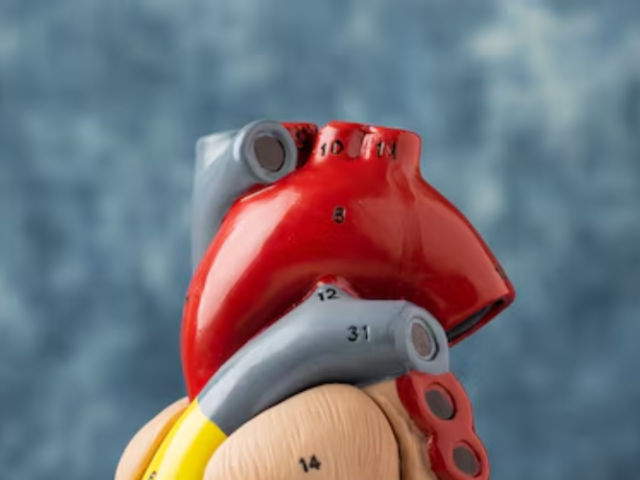
Sunny Nagpal, Co-founder, and Regional Managing Director, Httpool APAC
Sunny Nagpal of Httpool further walked us through the company’s global journey of 20 years
Oct 9, 2020, 11:25 IST
ad-tech
Httpool saw a growth of 300% after IMS acquisition; aims to double down in the coming years
Oct 9, 2020, 11:25 IST
Sunny Nagpal of Httpool further walked us through the company’s global journey of 20 years
Httpool , partner of major social media platforms that has seen 300% growth YoY globally in the past 2 years, is looking to double its growth rate in Asia by hiring more Indian talent and expanding its offices across the continent.- We caught up with
Sunny Nagpal , Co-founder, and Regional Managing Director, Httpool APAC to understand what helped the network strengthen its position in the Indian market and its vision for next year.
Httpool has been appointed by some of the top media platforms like Facebook, Twitter, Snapchat, Spotify, Warner Music, Outbrain and Brainly and LinkedIn as their exclusive ad sales partner across selected European and Asian markets.
In 2017, the Httpool became a part of Internet Media Services-Sony family and saw a growth of 300% globally after the partnership. It was also quick to bounce back to normalcy after the lockdown. While its business took a plunge in April, Httpool was able to come back to its normal level by the end of May. Now, it is aiming to double this growth rate in Asia, expand in all Asian markets, and recruit more talent from India.
Sunny Nagpal, Co-founder, and Regional Managing Director, Httpool APAC further walked us through the company’s global journey of 20 years, impact COVID-19 had on its business in India, trends he has seen in the digital marketing landscape and much more.
Excerpts:
Q. Can you walk me through Httpool's journey in India?
We started in India in 2010, although the group is now celebrating 20 years. We started back in 2000 in Slovenia's capital, Ljubljana. We grew from there to be now present in Asia, Central, Eastern Europe, Western Europe. Through our partner IMS, we are also present in Latin America and the USA. So, it has been quite a remarkable journey when we look back. We feel extremely accomplished and satisfied to be able to do what we have done.
So, if you look back at 2010, we started in a very traditional ad network position when there was tremendous consumption happening across multiple channels. There were many international destinations from both mobile applications and websites, which had audiences from India. The local brands wanted to advertise on those opportunities. Every advertiser wants to be where their audience is, but logistically it was not feasible back then. So we took a very standard ad network position by aggregating all possible destinations to advertise across all different digital advertising channels through our proprietary technology and added a lot of layers of targeting, relevance, and brand safety and brought it to the local advertisers and agencies.
We also realized that the entire ecosystem was quite linear, where all the key digital advertising channels were looked at in isolation. There was search, social, video, and display. Even the mobile was considered a separate channel within digital. We started taking a cross-channel position to advocate for major brands and the agencies and advertisers to begin looking at all the channels more holistically. And there were some challenges in doing so because it was difficult to understand or map the outcome or measure one channel's outcome to the other. We brought in many tools and best practices from international markets that we were present in and started advocating this cross channel approach through cross channel attribution modeling. Today, if you look at it, you could see that the cross channel has gone beyond digital.
Over time, we saw that we were getting a lot of regional opportunities outside of India, and we started establishing India more as a regional office. Today, we are managing eight markets in Asia, out of the Indian office. And we have got some of the large representations like Facebook, Twitter, GrabAds, Daily Motion, Lifesight, Outbrain in some of the other markets in the region. So it's an immensely satisfying position. We are proud to say that we are globally number one, we are regionally number one, and we are locally the number one in our business.
Q. What makes you number one in the market?
In the digital world, even more so than before, it is crucial to remain flexible and agile. So even though Httpool has grown to cover 30 plus markets and we work with close to 350 employees, we continue to be able to react and adapt quickly to the new realities to evolve and find the best model structure in working. Complete transparency is another aspect that makes us who we are in all geographies. Coupled with long-term vision and perseverance, transparency, in turn, feeds into creating stronger partnerships. These are the very core of our operation that has led to the success that we have tasted across.
Q. How important is the Indian market in the global scheme of things?
India is one of the largest economies that we are present in and one of the fastest-growing digital advertising markets. Besides that, the kind of talent availability we have in India is the right mix and right fit for all the regional expansion. We are operating in eight markets, and in almost every market, we have somebody from India who is supporting that, or somebody in India working for those markets. India is also where the functional leads are based out of for all APAC expansion -- our regional heads of marketing, HR, admin, finance, creative, measurement specialists, are all operating out of India currently.
Q. How did COVID-19 and lockdown impact your business?
COVID was a big blow to everyone. For us, there were a few things to think about and act upon, foremost towards our assets, which is our people. The moment we realized that this is bigger than what is being anticipated and things will be there longer than we believe, we immediately reached out to all our people. We assured them that the company would be there by their side in every eventuality, they're going to be looked after properly and assured them of all support. And at the same time, we aimed to get the motivation up, provide them with all the tools and methodologies so that they could continue executing our mandate in the new world.
We fine-tuned ourselves to what each of our partners perceived as market realities in our markets, quickly adapted approaches and adjusted the value propositions. Fortunately, what was also happening was that digital consumption was increasing during that time. So, moving away from traditional and more towards digital amplified our position in the market as experts who can provide support, lend efficiency, effectiveness by bringing in best practices, methodology, technologies, and a lot of cross-market learnings due to our global position and ability to learn from regions as far away as Latin America and Europe.. So, this worked well for us. We were able to turn around our business ground within May itself.
Q. Has COVID helped bring marketing analytics to the forefront, because digital has become more important than ever? Are more brands investing time and efforts in it and what kind of trends have you seen in the market after COVID?
In the last few months, whether new brands are launched or services rendered, audiences being targeted, digital is becoming the primary communication channel. So the shift to the digital enterprise has happened. We were always advocating that, and we're trying to highlight the value. The current situation acted as a stimulus to improve upon and helped accept digital as one of the main focus areas and convergence platforms for all marketing initiatives. So the shift has happened already. And it is also because the consumption patterns have changed; right from discovery to purchase, everything is happening digitally now.
People are often asking, 'what are you going to do in post-COVID times?' And for me, I don't think there is going to be something like “pre-COVID times” ever again because the stamp is going to be there on everyone -- on how businesses are run, how people think, how everything moves about now. It's all quite significantly impacted and is going to be a prolonged impact. So now, it is only about improving the experience for brands in digital, ensuring the brand safety, and being able to deliver on the KPIs because there's so much inventory, so many opportunities, destinations to advertise. Brands now only need to figure it out, or they need to be thoughtfully handheld on the spot to realize the best value proposition. Marketing analytics come in very handy here because it helps you recognize the value of your investment. Also the KPIs are constantly changing. Digital is now considered at every stage of the sales funnel and a lot of qualitative studies are being implemented to identify user behavior, product lift, and brand lift. So, marketing analytics is undoubtedly playing a more important role now.
Other trends that we see are around video becoming the most prominent ad format; in the absence of any physical interactions, storytelling has to happen more explicitly, and video is the right format to do that. So we're seeing many video assets being produced by all our brands and agencies to advertise across all platforms.
Q. As a marketeer, what has been your biggest learning from this experience?
As a marketer, the most significant learning should be the adjustment from long term to short term focus. How key objectives can be achieved even with a very tactical perspective on media planning and buying. From a traditional mid-funnel approach, bottom-funnel, long-term ATL, BTL initiatives, I think object-oriented, tactical-focused planning and execution should be given equal importance. It's going to lend to a much more agile and flexible ecosystem and way of it approaching advertising, coupled with measuring it correctly. So measurement is another essential learning that I've developed, in terms of seeing how it can help you realize the value of the investment and, at the same time, how it feeds into your decision making process. We've seen brands looking at the same platforms completely differently after running the campaign and measuring it correctly.
Q. What kind of growth have you seen so far, and what is your roadmap and vision for the next few years?
If you look at our journey, we've been growing year-on-year since 2010 in India and regionally in Asia; we have succeeded in all the markets we exist in. In 2017, Sony pictures majority owned company IMS acquired a majority stake in our company. It was quite a strategic acquisition that created the largest platform of representations globally. It was so beneficial that we've been growing 300% year over year as Httpool over the past two years. And we plan to double again next year and continue this exponential growth for the next three to four years by unlocking the opportunities for all large platforms in all of the markets, while also expanding geographies and adding on new products.
Q. Are you planning to expand your businesses?
Yes. We are planning to expand our business geographically across all Asian markets. We are trying to open more offices in India and other metros. We are also trying to bring more partnerships into the Indian market. We are recruiting more talent from the Indian market for the Asian expansions. So, we are looking at expansion at all levels.
INSIDER INTELLIGENCE REPORTS







